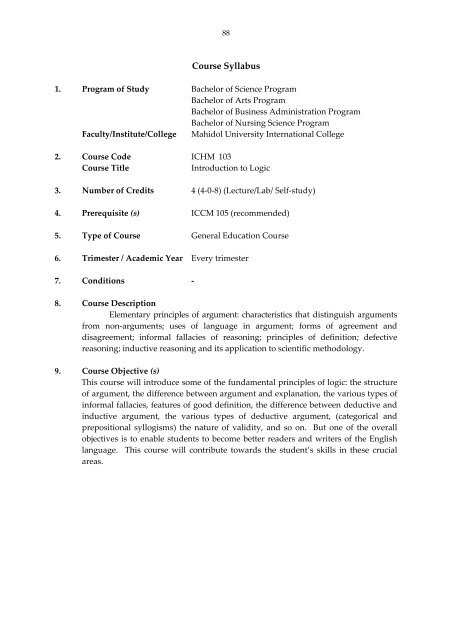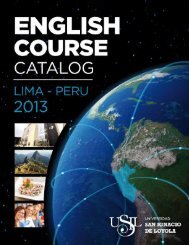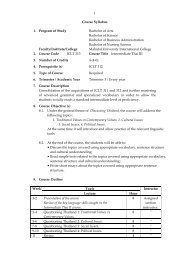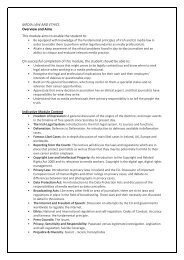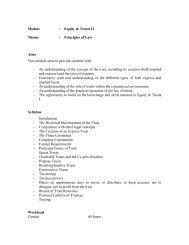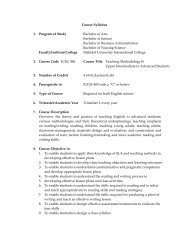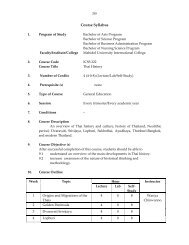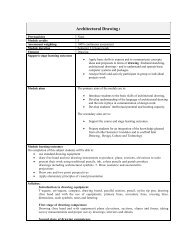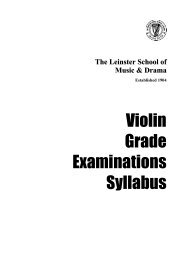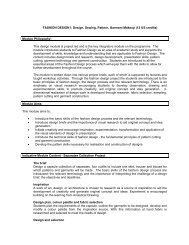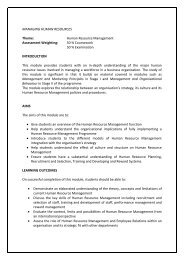ICHM 103 Introduction to Logic 4-cr. - KEI
ICHM 103 Introduction to Logic 4-cr. - KEI
ICHM 103 Introduction to Logic 4-cr. - KEI
You also want an ePaper? Increase the reach of your titles
YUMPU automatically turns print PDFs into web optimized ePapers that Google loves.
88<br />
Course Syllabus<br />
1. Program of Study Bachelor of Science Program<br />
Bachelor of Arts Program<br />
Bachelor of Business Administration Program<br />
Bachelor of Nursing Science Program<br />
Faculty/Institute/College Mahidol University International College<br />
2. Course Code <strong>ICHM</strong> <strong>103</strong><br />
Course Title<br />
<strong>Introduction</strong> <strong>to</strong> <strong>Logic</strong><br />
3. Number of Credits 4 (4‐0‐8) (Lecture/Lab/ Self‐study)<br />
4. Prerequisite (s) ICCM 105 (recommended)<br />
5. Type of Course General Education Course<br />
6. Trimester / Academic Year Every trimester<br />
7. Conditions ‐<br />
8. Course Des<strong>cr</strong>iption<br />
Elementary principles of argument: characteristics that distinguish arguments<br />
from non‐arguments; uses of language in argument; forms of agreement and<br />
disagreement; informal fallacies of reasoning; principles of definition; defective<br />
reasoning; inductive reasoning and its application <strong>to</strong> scientific methodology.<br />
9. Course Objective (s)<br />
This course will introduce some of the fundamental principles of logic: the structure<br />
of argument, the difference between argument and explanation, the various types of<br />
informal fallacies, features of good definition, the difference between deductive and<br />
inductive argument, the various types of deductive argument, (categorical and<br />
prepositional syllogisms) the nature of validity, and so on. But one of the overall<br />
objectives is <strong>to</strong> enable students <strong>to</strong> become better readers and writers of the English<br />
language. This course will contribute <strong>to</strong>wards the student’s skills in these <strong>cr</strong>ucial<br />
areas.
89<br />
10. Course Outline<br />
Week<br />
Topics<br />
Hour<br />
Instruc<strong>to</strong>r<br />
1<br />
<strong>Introduction</strong> <strong>to</strong> the course.<br />
Preliminary discussion of<br />
Lecture Lab Self‐<br />
Study<br />
4 0 8<br />
Assigned<br />
Section<br />
Instruc<strong>to</strong>r<br />
2<br />
argumentation<br />
4<br />
0<br />
8<br />
“<br />
3<br />
Recognizing argument; diagramming<br />
4<br />
0<br />
8<br />
“<br />
4<br />
arguments<br />
4<br />
0<br />
8<br />
“<br />
5<br />
Deduction and Induction; The uses of<br />
4<br />
0<br />
8<br />
“<br />
6<br />
language<br />
4<br />
0<br />
8<br />
“<br />
7<br />
Kinds of Agreement and<br />
4<br />
0<br />
8<br />
“<br />
8<br />
Disagreement<br />
4<br />
0<br />
8<br />
“<br />
9<br />
Informal Fallacies<br />
4<br />
0<br />
8<br />
“<br />
10<br />
Informal Fallacies<br />
4<br />
0<br />
8<br />
“<br />
11<br />
Mid‐term exam on all <strong>to</strong>pic discussed<br />
so far in the course<br />
4<br />
0<br />
8<br />
“<br />
Definition; Disputes<br />
Deduction; Categorical syllogisms<br />
Existential Import, Venn Diagrams,<br />
Fallacies<br />
Propositional <strong>Logic</strong>: disjunctives and<br />
hypothetical syllogisms<br />
Induction Cause and Effect<br />
Total 44 0 88<br />
Final Examination<br />
N.B. The instruc<strong>to</strong>r reserves the right <strong>to</strong> change <strong>to</strong>pics when appropriate.<br />
11. Teaching Method (s)<br />
11.1 Lecture
90<br />
11.2 Discussion<br />
11.3 Quiz<br />
12. Teaching Media<br />
12.1 Texts and Teaching Materials<br />
12.2 Transparencies<br />
12.3 Power Point Presentation<br />
13. Measurement and evaluation of student achievement<br />
Student achievement is measured and evaluated by<br />
13.1 the ability <strong>to</strong> understand the fundamental principles of logic: the structure of<br />
argument, the difference between argument and explanation, the various types of<br />
informal fallacies, features of good definition, the difference between deductive and<br />
inductive argument, the various types of deductive argument, (categorical and<br />
prepositional syllogisms) the nature of validity, and so on. But one of the overall<br />
objectives is <strong>to</strong> enable students <strong>to</strong> become better readers and writers of the English<br />
language. This course will contribute <strong>to</strong>wards the student’s skills in these <strong>cr</strong>ucial<br />
areas.<br />
Student’s achievement will be graded according <strong>to</strong> the faculty and university<br />
standard using the symbols: A, B+, B, C+,C,D+, D, and F.<br />
Students must have attended at least 80% of the <strong>to</strong>tal class hours of this course.<br />
MUIC standard grading <strong>cr</strong>iteria: 90% and above is grade A<br />
Ratio of mark<br />
1. Attendance 10%<br />
2. Mid‐term exam 45%<br />
3. Final Examination 45%<br />
Assessment made from the set‐forward <strong>cr</strong>iteria. Students who get 80% up, will have<br />
Grade A.<br />
14. Course evaluation<br />
14.1 Students’ achievement as indicated in number 13 above.<br />
14.2 Students’ satisfaction <strong>to</strong>ward teaching and learning of the course using<br />
questionnaires.<br />
15. Reference (s)<br />
To be announced<br />
16. Instruc<strong>to</strong>r (s)<br />
Dr. Charles Freeland<br />
Dr. Eugene Jones<br />
(each instruc<strong>to</strong>r teaches one or more sections)<br />
17. Course Coordina<strong>to</strong>r<br />
Dr. Charles Freeland


